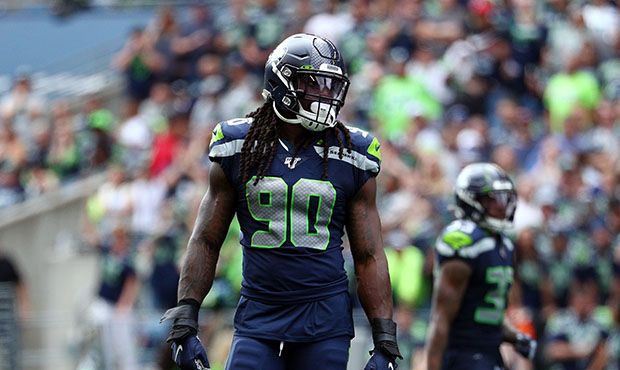It’s time for an update on Seattle’s cap space. Since many of you responded asking me to lay out my calculations and updates in an article, here I am!
So. Let’s start with the basics. If any questions pop up throughout reading this, feel free to ping me on Twitter and I can help answer them.
The Seahawks entered free agency with $32.6M in true cap space. Now… what do I mean by “true” cap space? True cap space is simply the actual, real amount of disposable spending the Seahawks have — after accounting for all the budgetary, miscellaneous things they’ll have to pay for throughout the season. You’ll see higher cap space numbers floating around for the Seahawks, but that’s their “raw” cap space — or the official number on the NFL’s books. However, those aren’t the numbers the team uses. The team, as mentioned above, has to budget for additional expenses throughout the season.
What are those additional expenses you might ask? Injured reserve, practice squad, draft slots, top 51 rule, and the minimum salary change with the new CBA. I’m not going to take a deep dive into how I calculated the $32.6M number, but all you need to know is that’s what their true cap space was entering free agency. If you’re interested in diving deep into the calculations, my cap friend John Gilbert wrote a phenomenal breakdown.
Before I start listing off the cap impact of Seattle’s recent activity, it’s important to note than the “true cap space” number accounts for filling out the roster. What does this mean? When Seattle signs a player, I take their 2020 cap hit and have to subtract the value of a player’s salary at the bottom of the roster ($675K) to determine the net cap impact… since every player Seattle signs or trades for is taking the slot of a player salary I have already budgeted for. I hope that makes sense.
Let’s begin:
- Seahawks re-signed Jarran Reed to a two-year deal. His 2020 cap hit is $9.35M but we have to subtract the $675K, so his net cap cost on the Seahawks for 2020 is $8.675M.
- Applied RFA tenders to multiple players, with a net cost of $4.518M. (RFA values minus replacement costs of $675K per)
- Signed BJ Finney from the Steelers, with a net cost of $2.825M.
- Signed Brandon Shell from the Jets, who has a $2.8M net cap cost for 2020.
- Signed Cedric Ogbuehi, with a net cap cost of $1.562M.
- Signed Chance Warmack, who qualifies for the minimum salary benefit and will only cost $750K on the cap — but after you subtract the $675K, his net cost is $75K against our true cap calculations.
- Traded for Quinton Dunbar, who has a net cap cost of $2.746M in 2020.
This leaves Seattle with $9.4M in true cap space. Note that we don’t have the contract figures on Bruce Irvin, Philip Dorsett, or Luke Willson yet. However, I expect those deals to be minimal in total value.
Now you might be wondering: “But Evan, $9.4M in true cap space isn’t enough to sign Clowney!” Not true. Let me explain why…
Two really important things to note:
- The “true cap space” calculation is purely a net budget exercise. It does not imply that all those budgetary items are due immediately, as in right now. The Seahawks could go pay a player (*cough* Clowney *cough*) beyond their true cap space number, and then simply make a move later on in the year (cut a player to save space) to release that extra space and pay for whatever budgetary item has come up. Seattle may have $9.4M in true cap space, but their raw cap space — which doesn’t account for those budgetary items — is much higher.
- The $9.4M in true cap space number assumes no cuts of any predictable players. For example, Seattle could cut Justin Britt and immediately open up ~$7-8M in true cap space. They could cut Ed Dickson and open up another $3M. Seattle has been reportedly interested in trading Tedric Thompson, which would open up another $2.1M. The point is they have options. That $9.4M true cap space number could be quickly and easily increased.
Sure seems to me like Seattle is holding a $10-15M true cap space slot for another player. John Schneider has been ridiculously frugal in his recent moves, ensuring that as little space is used. Simply look at their recent acquisitions.
Hmmmm. I wonder who Seattle would be interested in re-signing.
